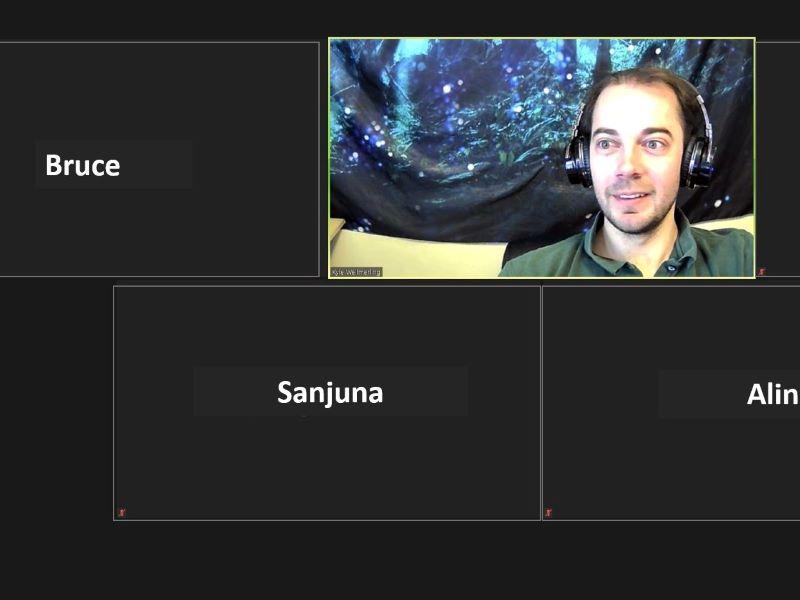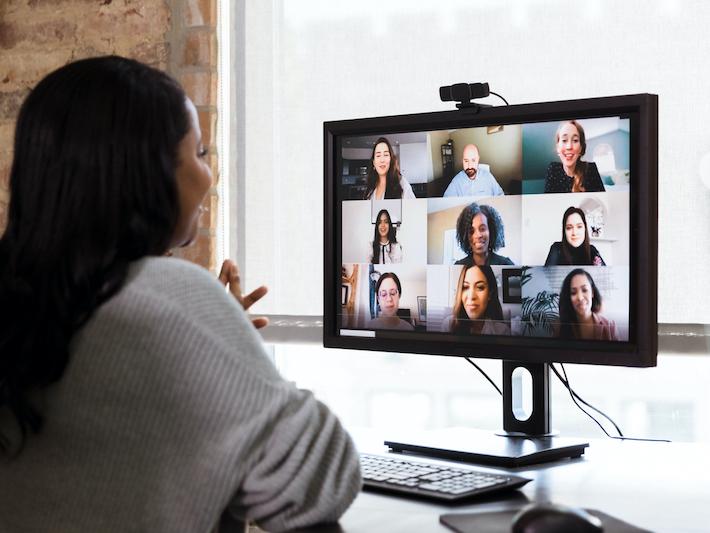There is a lot of debate about whether students should be made to put their cameras on in a Zoom or Teams or other online class setting. In higher education, students can’t be forced to do so, which leaves most tutors exasperated at the lack of interaction and thus engagement from those who choose not to have them on. However, it is my belief that the majority of those who don’t turn them on are actually sitting on a “should I or shouldn’t I” fence, and can be persuaded to make a sensible learning decision.
It’s not enough to just tell students that it is better to have the camera on. There is some excellent advice around building trust and community as a means to naturally encourage positive camera decisions, but I also think that unless learners truly understand the learning benefits of doing so, then they are less likely to make positive learning decisions.
Therefore, it makes sense to teach them about the processes of learning. Improve their metacognition, and be persistent in explaining the benefits of cameras being on. Of course, there are some occasions where students legitimately can’t have their cameras on, but once you explain to students how to blur their backgrounds as a way to avoid any embarrassment, the number of those who can’t benefit from the interactions enabled by the camera being on will be dramatically reduced.
Here’s what I would tell students are the benefits of having their cameras on:
1. To retrieve past learning: Every time you are asked to recall information from previous learning, and you can successfully do so, the strength of the memory increases. It is an accepted understanding that the brain needs several interactions with content to not only secure it into the long-term memory, but for that memory to be retrieved easily. It is this effortless retrieval that militates against exceeding intrinsic cognitive load in future learning contexts. If you don’t engage in answering questions in class, you miss an opportunity to strengthen your memory – you can’t strengthen memory by passively looking on. If your camera is on, the tutor is more likely engage with you and ask you retrieval-based questions.
2. To learn new content: Thinking and discussing and demonstrating what you know about new information begins the process of making connections to existing knowledge. The tutor will find it hard to discuss a topic with you if your camera is off, simply because it is a really unnatural thing to passionately engage with a blank screen. When learning something new, involving yourself in discussions about the topic, and being forced to evaluate your thinking based on answers to the discussion, creates a situation where the brain either assimilates the content and makes connections to existing knowledge, or accommodates the content and adds the knowledge as a new point of connection. Sometimes, but just as importantly, the brain decides that it doesn’t understand it at all, and experiences cognitive dissonance. The reason why this is important is because it puts you in a position to do something about the knowledge gap. If you don’t go through the process of the discussion, you might think you understand something when in fact you don’t, and may not find out until it is too late during an exam.
3. To interact with peers: Needing to evaluate your thoughts with peers forces the brain to pay attention to what you think you know, which facilitates learning. The rationale is similar to the point above, but peers can provide another opportunity to help you understand something, because sometimes a peer is able to provide an analogy or explanations that you can relate to more easily than that of your tutor. If your camera is off, most of your peers won’t make the effort to engage with you. They will likely ignore you, which means you won’t be able to test yourself against their knowledge.
4. To increase attention: It’s easier to concentrate and easier to not get distracted when the camera is on. Both of these enhance the learning opportunity. When the camera is off, you are not being held accountable so you can look at your phone without anyone noticing, you can get up and walk away from the learning, you can make a sandwich. All these things take your attention away from the class, which means the content can’t begin the process of moving into the long-term memory. This has big implications for future learning that may be connected to or build upon this topic.
5. To improve the teaching: The tutor will teach better if they are teaching to a person and not a screen. It comes back to the natural inclination for humans to want to engage with humans. It won’t be a deliberate choice that the tutor or your peers will make to not engage if your camera is off – they will naturally gravitate and engage with those whose cameras are on.
6. To be professional: It’s important to make professional mature decisions about the optimal learning situations you put yourself in. You wouldn’t walk into a classroom with a bag over your head. You most certainly wouldn’t walk into a meeting in a workplace hiding yourself. Sitting in a Zoom or Teams meeting with your camera off without a legitimate reason is like hiding – which is not a sensible learning choice. If you legitimately can’t have your camera on, the polite thing to do is to inform the tutor. Not doing that and avoiding the responsibility is not professional adult-like behaviour.
Clearly, for the above points to have an impact, there needs to be plenty of opportunity in the session for active learning, where students get the chance to interact with the content. It is important to be clear and explicit about the expectations for learning, and that you repeat these every time there is resistance. Be clear as to why you have the expectations: that ultimately you have the learners’ best interests at heart – because you know and understand how learning best happens.
Paul Moss is a learning design and capability manager at the University of Adelaide.




comment